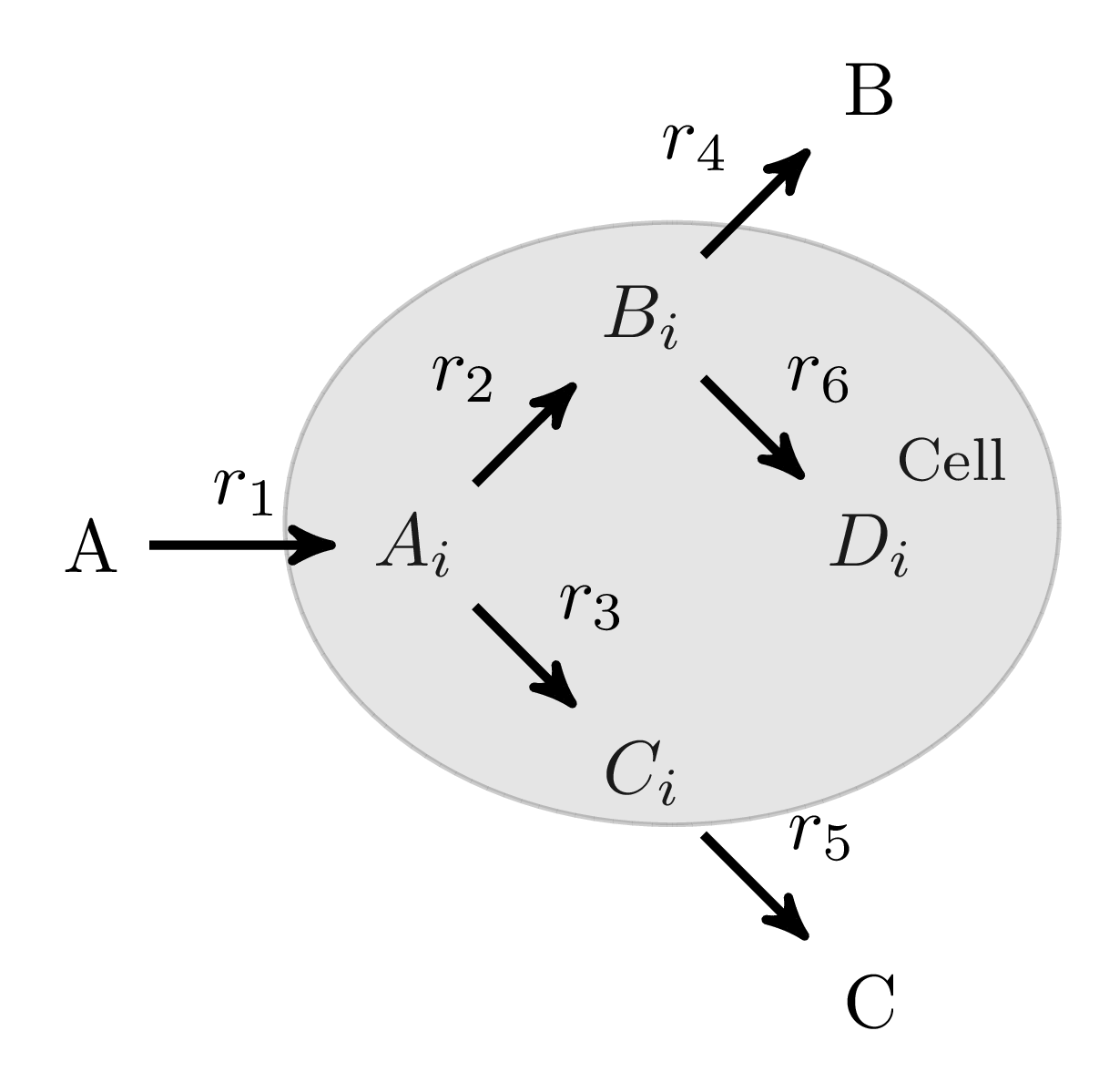Figure below depicts simplified metabolic and transport reactions taking place in the production of $\text{B}$ from $\text{A}$ in a cell. The subscript $`i\text{’}$ refers to intracellular metabolites. $r_{j}$ is the $j^{\text{th}}$ reaction flux in $\frac{g}{(\text{g dry mass)h}}.$ Under pseudo-steady-state condition, the following reaction fluxes are available.
$r_{1}=4, r_{3}=1$ and $r_{6}=1.$
The transport flux of $\text{B}, \; r_{4}$ is ___________$\frac{g}{(\text{g dry mass)h}}.$

